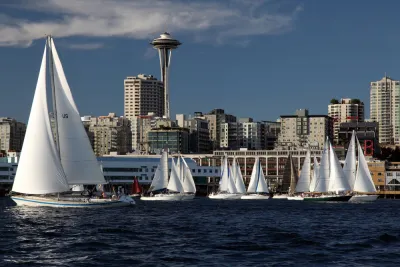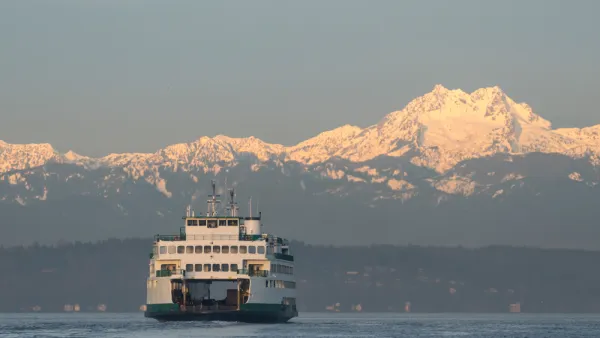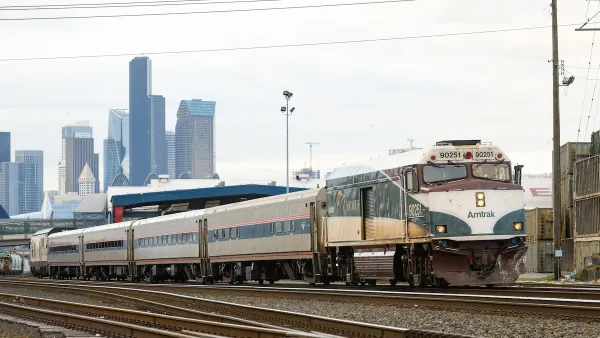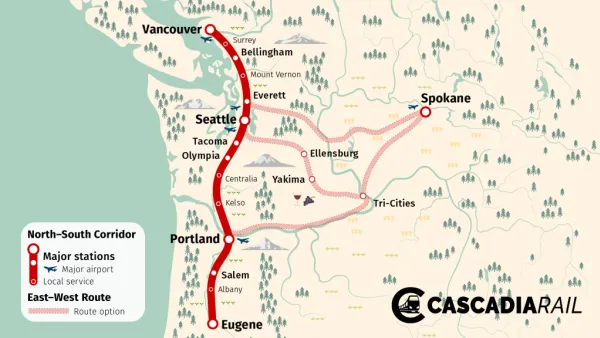Seattle appears to be following the Vancouver, B.C. model by increasing population and residential density while investing in transit. If it works, traffic congestion will not deteriorate, and vehicle trips should drop.

America's growing cities face an immense challenge: can they add population without greatly exacerbating traffic congestion? By one measure, Vancouver, British Columbia set the standard by "reduc(ing) traffic by 20 to 30 percent since 2006 while growing its population by 4.5 percent," according to this August 2013 post.
Outside of the six transit legacy cities in the U.S: "Boston, Chicago, New York, Philadelphia, San Francisco and Washington, D.C. -- that developed dense downtowns long before the automobile and have always maintained significant transit ridership," it is difficult to increase transit share as newer cities were largely designed around the automobile, observes Scott Beyer in Governing.
Seattle may come closest to emulating Vancouver model by "relaxing zoning laws to allow for denser development" and improving transit.
As America’s fastest-growing big city -- it added 21,000 people in 2015 -- it’s growing denser and more congested --[but] countywide bus ridership since 2002 has grown at a faster rate, more than double, compared to the population.
Residents invest in transit
Last November, the Puget Sound region passed a measure that will fund the the $53.8 billion Sound Transit 3 plan. More telling of the pro-urban outlook of city residents, though, was the passage of a transportation measure in 2015. "(T)he biggest winners appear to be Seattle’s urbanists — its advocates for more bicycling, transit and density," reported The Seattle Times.
And a year earlier, Seattle residents stepped up to fund buses after King County voters, the majority of which live outside Seattle, rejected increasing a car tab and a 0.1 percent sales tax.
"Time will tell whether these measures help Seattle maintain, or even improve, its mobility," concludes Beyer.
Already, average congestion and commute times there remain below that of legacy cities. The real test will be keeping it that way even as it continues to get denser and bigger.
FULL STORY: The Right Kind of Transit for 'In-Between' Cities

National Parks Layoffs Will Cause Communities to Lose Billions
Thousands of essential park workers were laid off this week, just before the busy spring break season.

Retro-silient?: America’s First “Eco-burb,” The Woodlands Turns 50
A master-planned community north of Houston offers lessons on green infrastructure and resilient design, but falls short of its founder’s lofty affordability and walkability goals.

Delivering for America Plan Will Downgrade Mail Service in at Least 49.5 Percent of Zip Codes
Republican and Democrat lawmakers criticize the plan for its disproportionate negative impact on rural communities.

Test News Post 1
This is a summary

Test News Headline 46
Test for the image on the front page.

Balancing Bombs and Butterflies: How the National Guard Protects a Rare Species
The National Guard at Fort Indiantown Gap uses GIS technology and land management strategies to balance military training with conservation efforts, ensuring the survival of the rare eastern regal fritillary butterfly.
Urban Design for Planners 1: Software Tools
This six-course series explores essential urban design concepts using open source software and equips planners with the tools they need to participate fully in the urban design process.
Planning for Universal Design
Learn the tools for implementing Universal Design in planning regulations.
EMC Planning Group, Inc.
Planetizen
Planetizen
Mpact (formerly Rail~Volution)
Great Falls Development Authority, Inc.
HUDs Office of Policy Development and Research
NYU Wagner Graduate School of Public Service





























